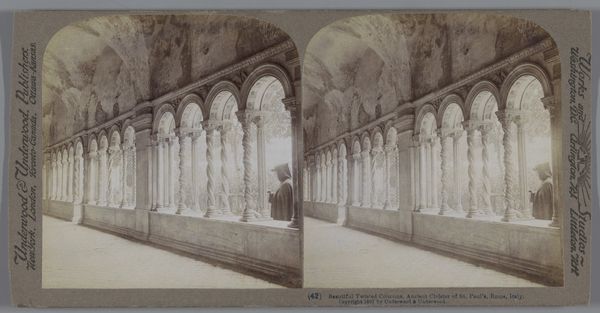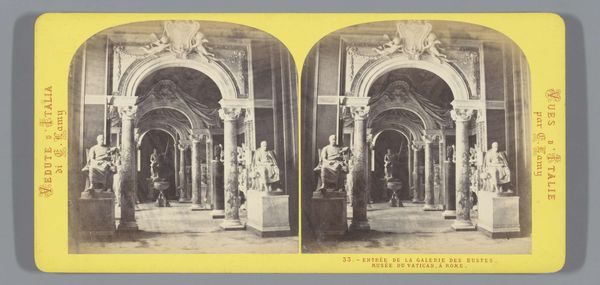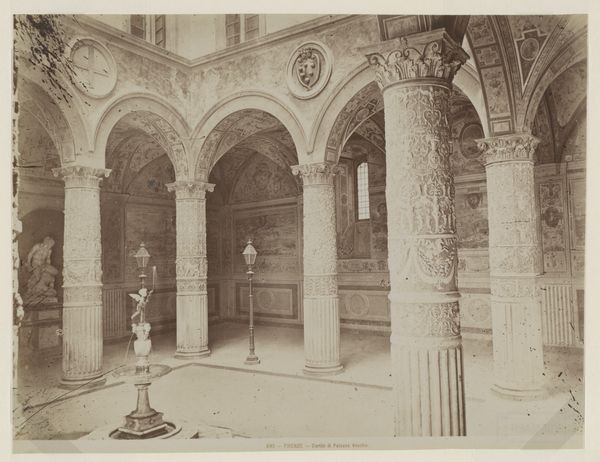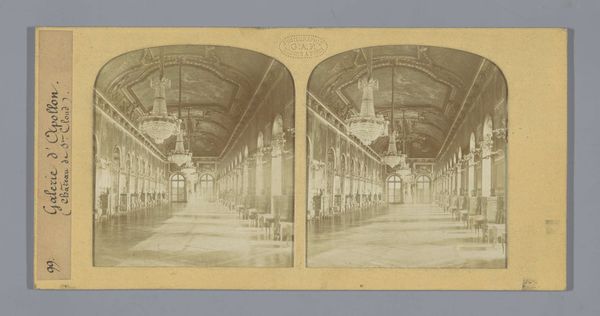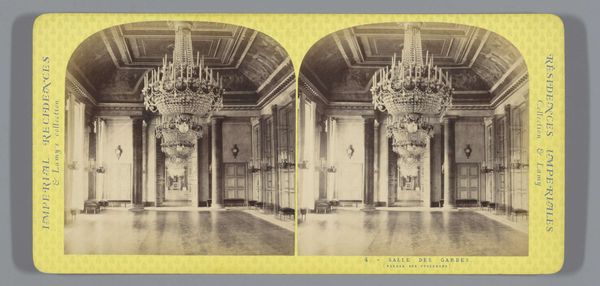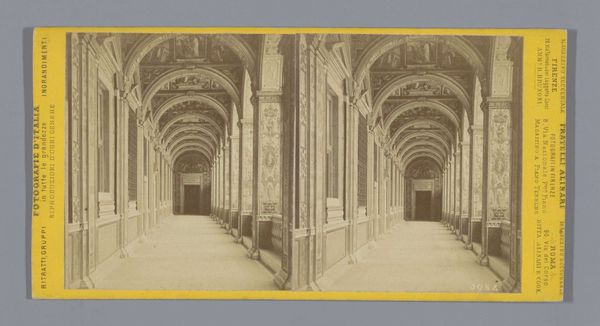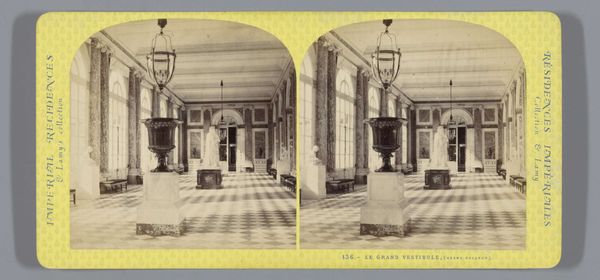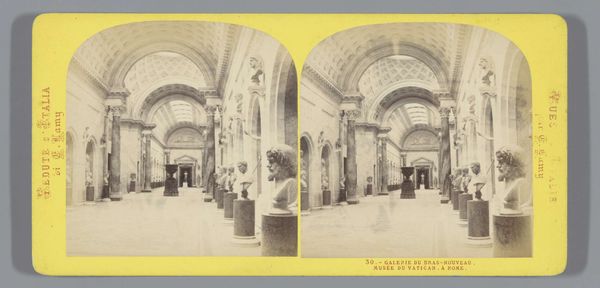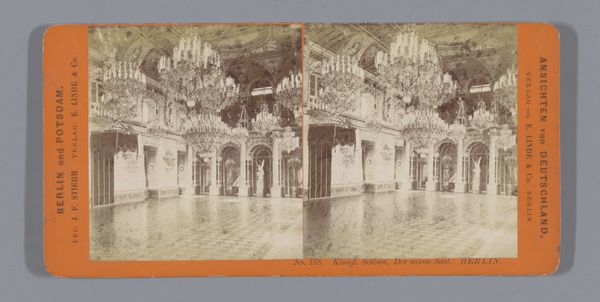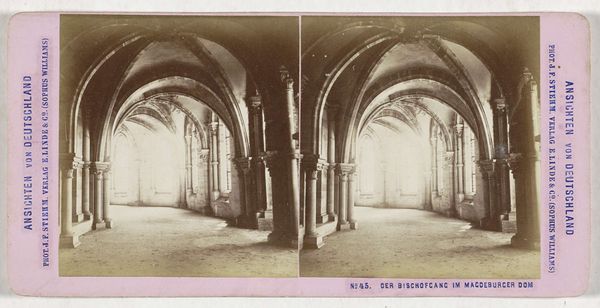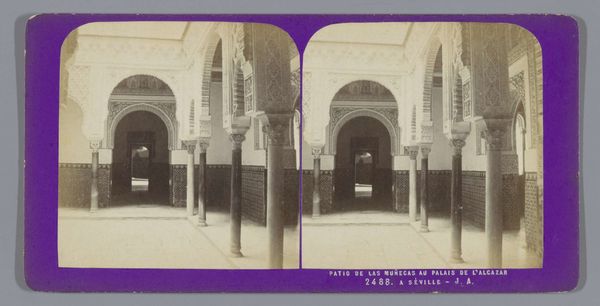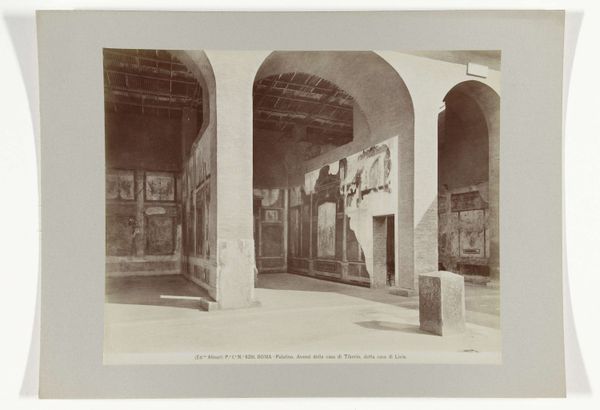
print, photography
#
portrait
# print
#
landscape
#
photography
Dimensions: height 87 mm, width 178 mm
Copyright: Rijks Museum: Open Domain
Curator: This is a fascinating photograph from between 1861 and 1878 by Ernest Eléonor Pierre Lamy. It's titled "Schelpengrotto in het Palazzo Borromeo op Isola Bella"— Shell Grotto in the Borromeo Palace on Isola Bella. Editor: It certainly has a subdued, almost ethereal atmosphere. The symmetry is immediate, a kind of double vision pulling you into the hallway, but also unsettling given the slightly out-of-register stereoscopic view. What are your initial thoughts about the composition? Curator: I'm immediately drawn to the overwhelming use of shells as ornamentation. Looking at the process here, can you imagine the labor that went into covering every surface like that? It's such a laborious application of these found materials. We are really confronted with the materiality itself. Editor: Yes, I agree about the labor. From a formal point of view, there’s a powerful contrast between the ordered architectural structure, that grid of arches and columns, and the chaotic texture of the shells. Curator: Indeed. And there's something fascinating about elevating these everyday materials, shells, through the medium of high art. In a formal setting. But let’s also not overlook the photographic process at play, the printing and then layering, how this all comes together. Editor: Thinking about this palace and it's interior decorations, I can not help wonder, why shells? What kind of statement is made by using them as decorative art, which otherwise would be paintings or sculptures. How do you see this contributing to the overall design? Curator: It invites contemplation on what exactly is precious, or valuable. Is it simply tradition, the weight of convention, that dictates marble statues are 'high' art? This piece, the shell grotto challenges those established systems, that distinction between what is and isn’t worthy of reverence, that hierarchical approach we usually assume. Editor: I found it particularly compelling in highlighting how artistic value isn't always about the preciousness of materials, but about creative expression and labor—turning common, naturally found objects into sources of extraordinary, elaborate artistry. Curator: A brilliant point, It allows us to revisit notions of what truly is important. Thank you for your observations. Editor: Thank you for your time and perspectives.
Comments
No comments
Be the first to comment and join the conversation on the ultimate creative platform.

